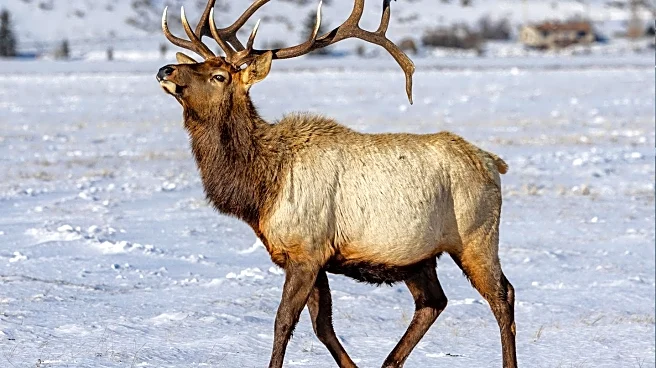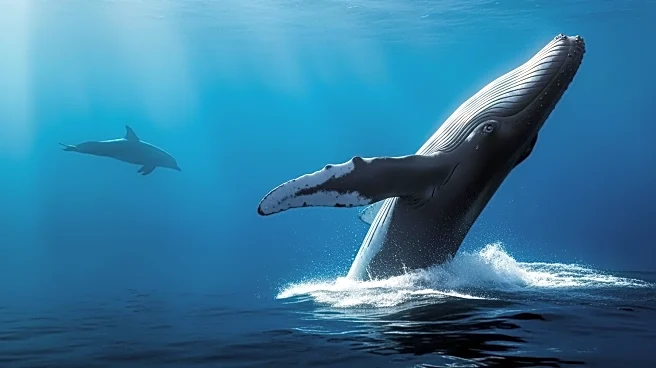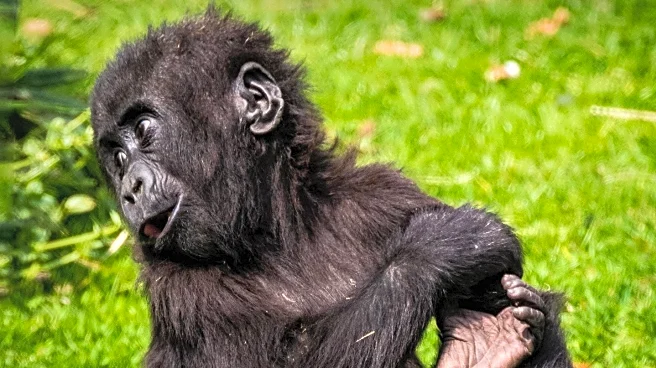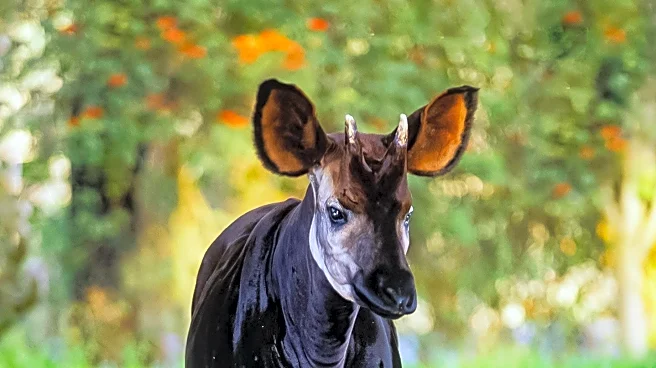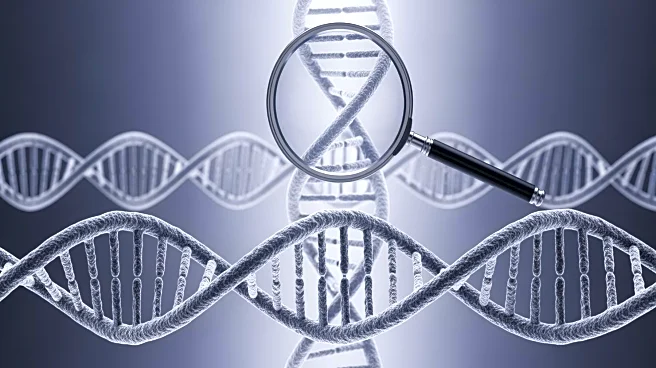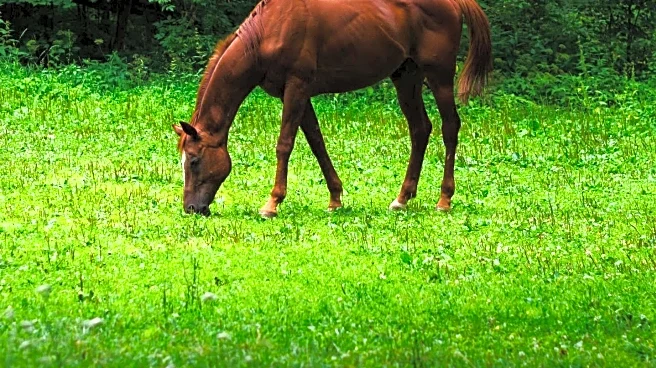What's Happening?
A rare piebald cow elk was recently spotted by Powell resident Michael Moore near the South Fork of the Shoshone River, east of Cody. Piebaldism, a genetic recessive trait resulting in a lack of melanin,
causes the animal to have white patches on its body. This condition is extremely rare, occurring in approximately 1 out of every 100,000 elk, according to Colorado Parks and Wildlife. The elk, which appeared young and healthy, was a unique sight for Moore, who has never encountered such an animal in the wild despite years of wildlife photography. Piebaldism requires both parents to carry the recessive gene, and while it can result in striking appearances, it often comes with genetic issues that can affect the animal's survival.
Why It's Important?
The sighting of a piebald elk is significant due to its rarity and the genetic implications it carries. Piebaldism can lead to various physical deformities, which often prevent affected animals from reaching adulthood. The presence of a healthy piebald elk suggests it has overcome these potential genetic challenges, making it a noteworthy occurrence for wildlife enthusiasts and biologists. This event also highlights the genetic diversity within elk populations and the role of recessive traits in wildlife. The rarity of such sightings can draw attention to the importance of genetic research and conservation efforts aimed at understanding and preserving wildlife diversity.
What's Next?
If the piebald elk survives the winter, it may contribute to the genetic pool by producing offspring, potentially passing on the piebald trait if it mates with a bull elk carrying the same recessive gene. This could lead to more sightings of piebald elk in the future, providing further opportunities for study and observation. Wildlife organizations and researchers may take an interest in monitoring this elk to gather data on its health and reproductive success, which could offer insights into the survival and propagation of recessive genetic traits in wild populations.
Beyond the Headlines
The occurrence of piebaldism in elk raises questions about the broader implications of genetic diversity and the survival of rare traits in the wild. It underscores the complexity of genetic inheritance and the potential for unique genetic expressions to emerge in natural populations. This sighting may also spark interest in the ethical considerations of wildlife photography and observation, as enthusiasts seek to capture rare moments without disrupting the animals' natural behaviors.
